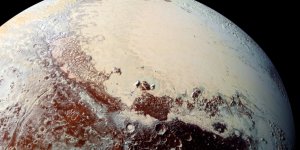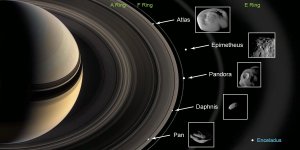| News / Space News |
Mars Gullies Likely Not Formed by Liquid Water
NASA | AUGUST 10, 2016
New findings using data from NASA's Mars Reconnaissance Orbiter show that gullies on modern Mars are likely not being formed by flowing liquid water.

Martian gullies resemble gullies on Earth that are carved by liquid water. ![]()
Scientists use the term "gully" for features on Mars that share three characteristics in their shape: an alcove at the top, a channel, and an apron of deposited material at the bottom.
Gullies are distinct from another type of feature on Martian slopes, streaks called "recurring slope lineae," or RSL, which are distinguished by seasonal darkening and fading, rather than characteristics of how the ground is shaped. Water in the form of hydrated salt has been identified at RSL sites.
Researchers from the Johns Hopkins University Applied Physics Laboratory (APL) in Laurel, Maryland, examined high-resolution compositional data from more than 100 gully sites throughout Mars.
The findings showed no mineralogical evidence for abundant liquid water or its by-products, thus pointing to mechanisms other than the flow of water -- such as the freeze and thaw of carbon dioxide frost -- as being the major drivers of recent gully evolution.
Gullies are a widespread and common feature on the Martian surface, mostly occurring between 30 and 50 degrees latitude in both the northern and southern hemispheres, generally on slopes that face toward the poles.
On Earth, similar gullies are formed by flowing liquid water; however, under current conditions, liquid water is transient on the surface of Mars, and may occur only as small amounts of brine even at RSL streaks. The lack of sufficient water to carve gullies has resulted in a variety of theories for the gullies' creation, including different mechanisms involving evaporation of water and carbon dioxide frost.
The team had shown there was seasonal activity in gullies -- primarily in the southern hemisphere -- over the past couple of years, and carbon dioxide frost is the main mechanism they suspected of causing it.
YOU MAY ALSO LIKE



